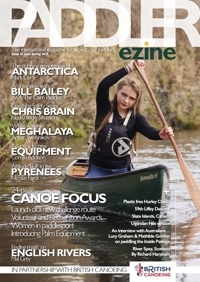Grade: 2-4+
The upper sections of the River Dart offer some of the best white water canoeing in the country. The Dart is also a great place for flat water touring, especially the lower reaches. Banks of ancient woodland cover the lower stretches. The river becomes tidal at Totnes before emptying into the English Channel at Dartmouth.
Paddlers must be aware that the river can rise very quickly after heavy rain and in high flows it is only suitable for experienced paddlers.
To help protect the special qualities of the Dart Valley, paddlers are advised not to use the upper sections in drier weather and low water so as to avoid any damage to the environment. There are also many sensitive spawning grounds for fish that must not be disturbed, so avoid disturbing gravel beds and only paddle when conditions are appropriate.
As a river popular with anglers, all river users are encouraged to share the space with care and respect.
The River
The river is split into three main sections when it comes to white water paddling. The first is the upper Dart and is considered grade 3-4+ depending on water levels, and so generally considered an advanced run.
Second is the loop section. This runs from Newbridge to Holne Bridge is graded 2-3. It is more suitable for intermediate paddlers with the right skill set and group.
Finally, the lower section is grade 2, which is suitable for beginners looking to practice their first white water skills.
Holne Bridge on the Dart – part of the ‘Loop’ section – is Paddle UK owned places to paddle. This strip of woodland provides a convenient access and egress point.




 Go Paddling
Go Paddling Clear Access Clear Waters
Clear Access Clear Waters Paddles Up Training
Paddles Up Training Clubhouse
Clubhouse Services Login
Services Login

